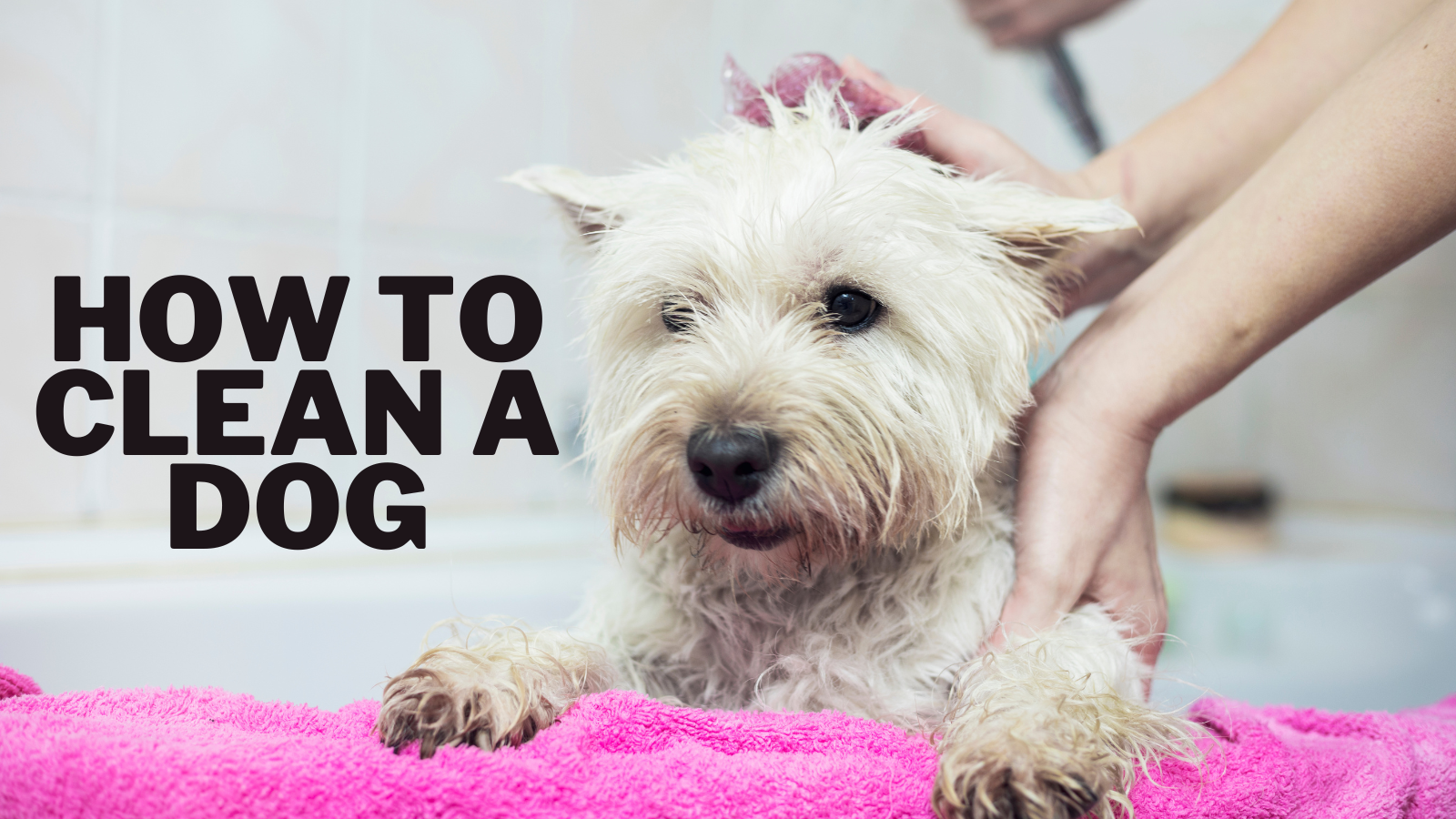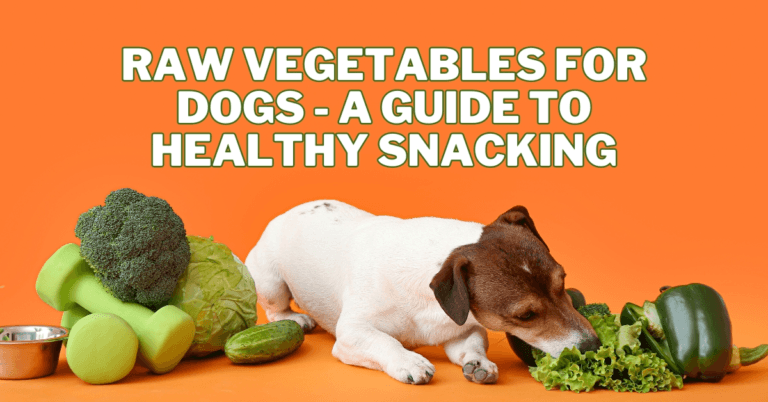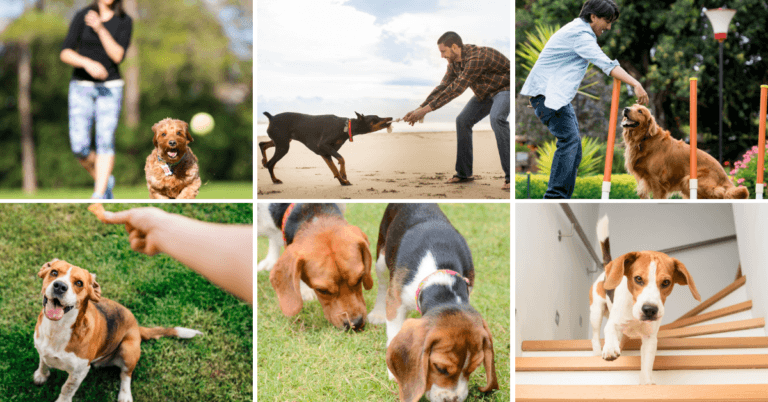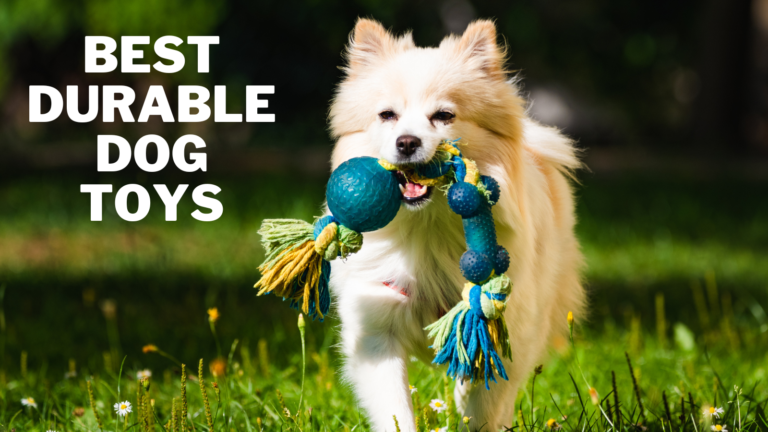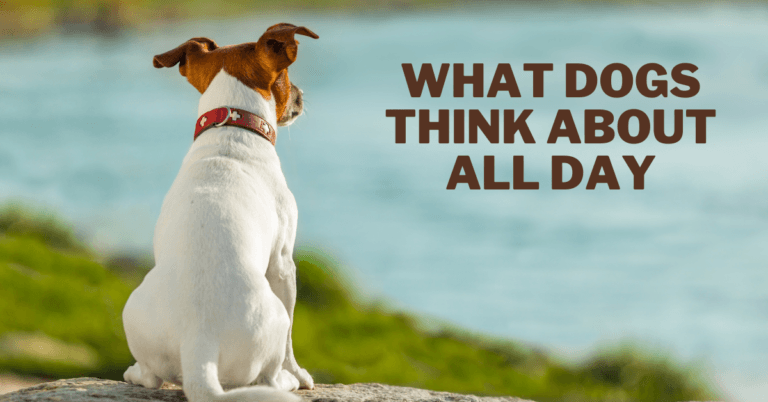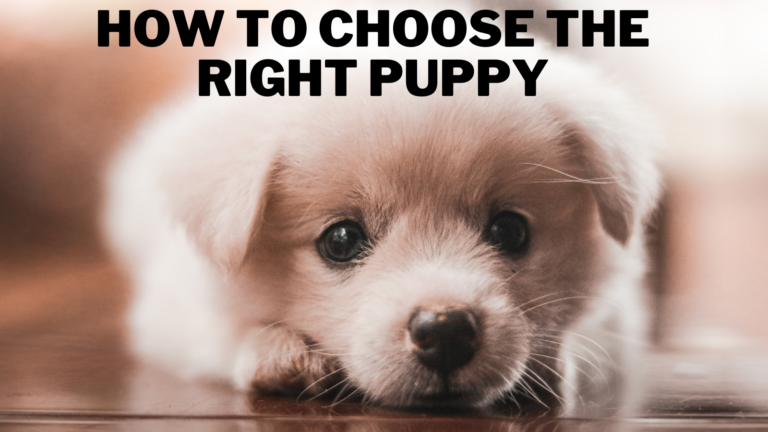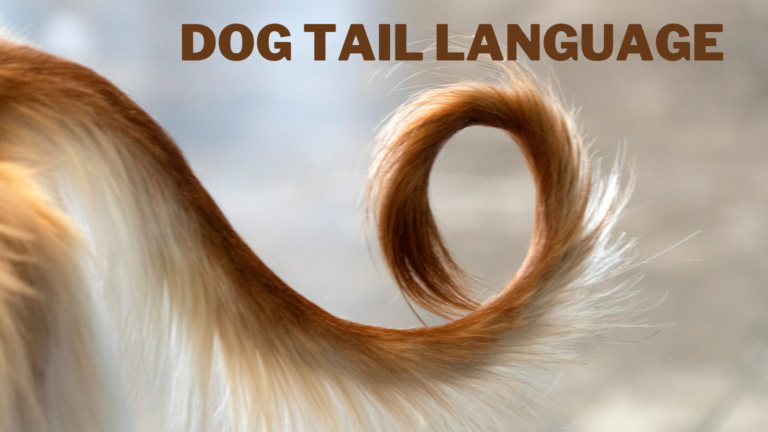How To Clean A Dog
How To Clean A Dog
Here is a groomer's top advice on bathing a dog, from choosing the right shampoo to washing a dog's head.
A little shampoo, a little water… Bathing a dog can't be that difficult, right? It's sometimes more difficult than you anticipate. Whether your dog enjoys baths or flees when you say “B-A-T-H,” bathing your dog regularly is a vital element of pet care.
Linda Easton, president of International Professional Groomers and proprietor of Salem, Oregon-based grooming business Canine Concepts, CPG, and ICMG, gives her top dog-washing techniques.
Bathing your dog regularly is important to maintaining his grooming and hygiene. Baths, of course, aid in the removal of visible dirt that your dog has accumulated during enjoyable walks and romps through natural settings. Bathing your dog's coat not only keeps it clean but also keeps it healthy and parasite-free.
While all dogs require bathing, not all require bathing simultaneously – factors such as their breed, fur, and habitat all influence the appropriate interval between showers.
Once you've determined how many baths your pet needs, use these professional recommendations for bathing a dog, backed by a veterinarian, to make those baths as enjoyable and stress-free as possible.
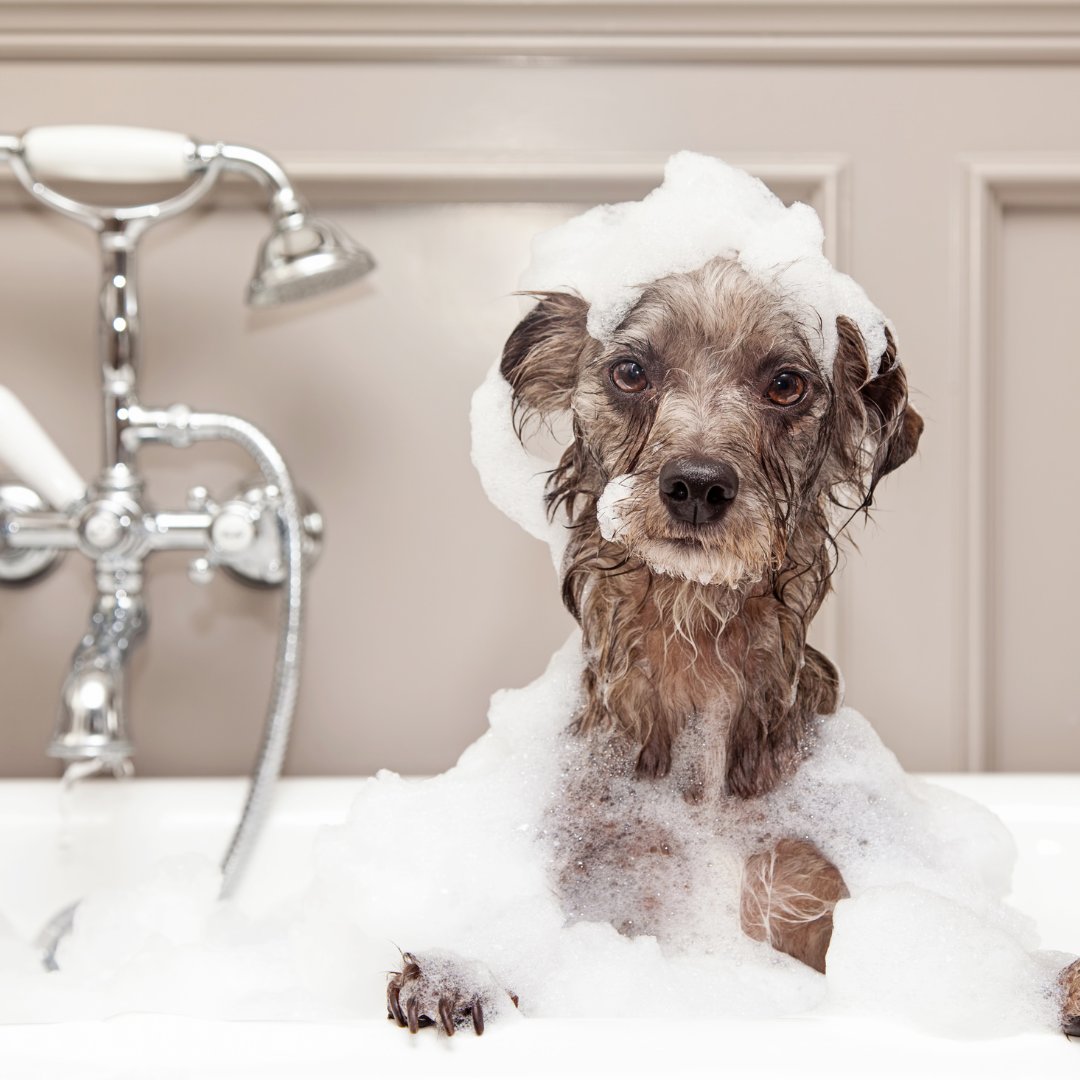
Why Should You Bathe Your Dog?
There are several reasons why it is important to bathe your dog regularly.
1. Hygiene
A regular bath can help remove dirt, debris, and bacteria from your dog's coat, keeping them clean and reducing the risk of skin infections.
This is because a bath can help remove any dirt, grime, or bacteria that may be stuck in your dog's coat, which can lead to skin irritation, infection, and other health problems if left untreated.
Dirt and debris can also cause skin irritation and itching, leading to scratching and biting, further irritating the skin and causing infection.
Additionally, bacteria can grow on the skin if left uncleaned, leading to a foul odour and detrimental to your dog's overall health.
Regular bathing can also help remove fleas, ticks, or other parasites that may be living on your dog's coat, which can contribute to skin irritation and infection.
Furthermore, bathing can help remove any oils or other substances that may be present on the skin, which can cause itching and discomfort.
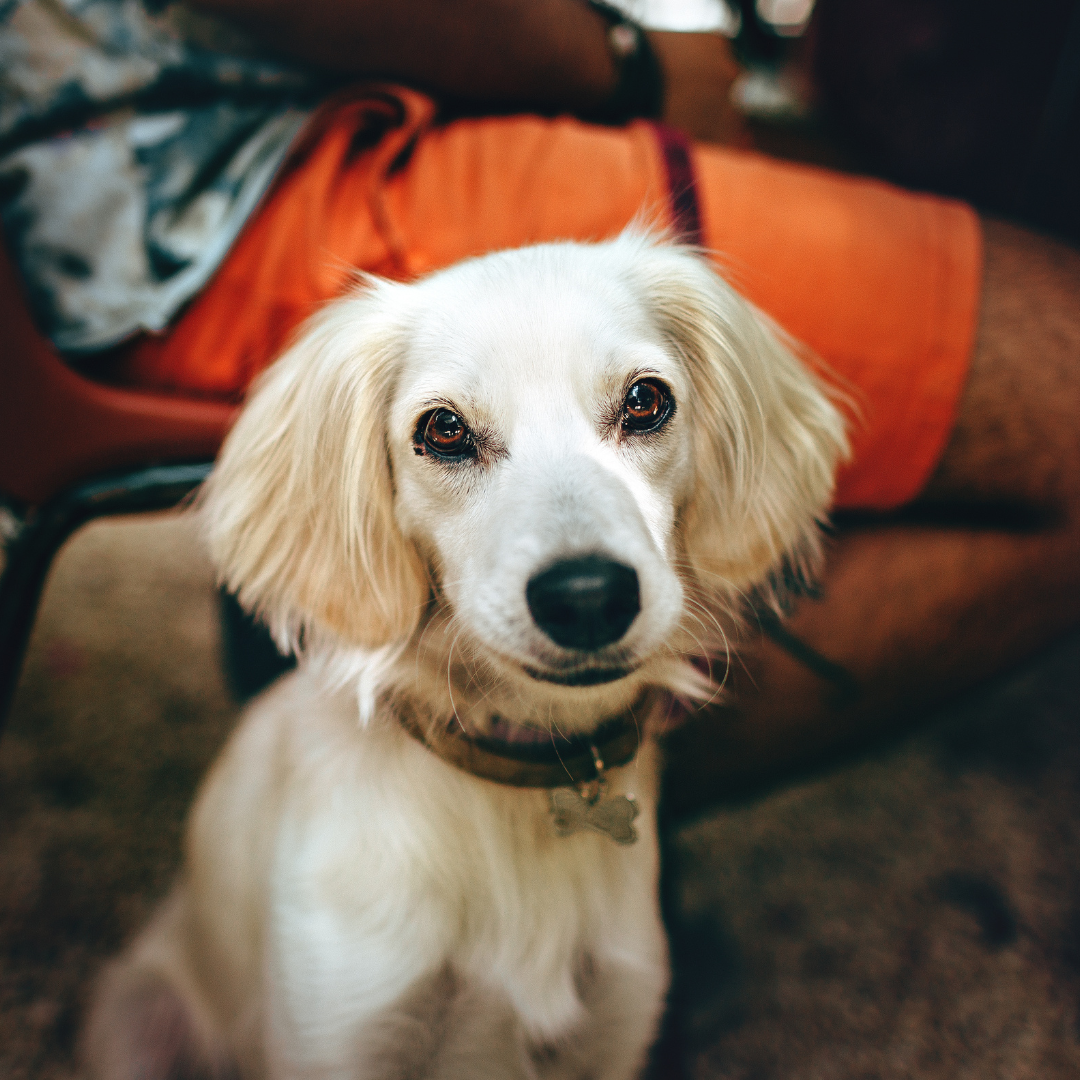
2. Odour Control
Dogs can develop a strong odour if they are not bathed regularly due to the accumulation of dirt, oils, and bacteria on their skin and coat.
These substances can create a musty or even unpleasant smell if not removed. A regular bath can help remove these substances and keep your dog smelling fresh and clean.
When dogs sweat, they excrete oils from the skin, which can also cause an odour. These oils can accumulate on the skin and coat, creating an unpleasant smell if not removed. Bathing can help remove these oils and keep your dog smelling fresh.
Another cause of bad odour in dogs is the accumulation of bacteria on their skin and coat. Bacteria can thrive in warm and moist environments, such as the skin and coat of a dog. This can lead to a foul odour, which can be eliminated with regular bathing.
Additionally, some breeds of dogs are prone to skin conditions like seborrhea which can cause bad odour in dogs. Regular bathing can help to control this condition and reduce the odour caused by it.
3. Allergies And Skin Irritations
If your dog has allergies or skin irritations, a bath can help soothe and heal its skin. This is because a bath can help remove any allergens or irritants that may be present on the skin, such as pollen, dust, or mould.
Additionally, bathing can help to moisturize the skin, which can help to reduce itching and inflammation.
Bathing with a gentle, hypoallergenic shampoo that is pH-balanced for dogs can also help to soothe and heal irritated skin. Some shampoos contain aloe vera, oatmeal, or tea tree oil, which can help to soothe and moisturize the skin.
If your dog has a specific skin condition, it is recommended to consult a veterinarian before using any shampoo, as certain ingredients might harm the dog.
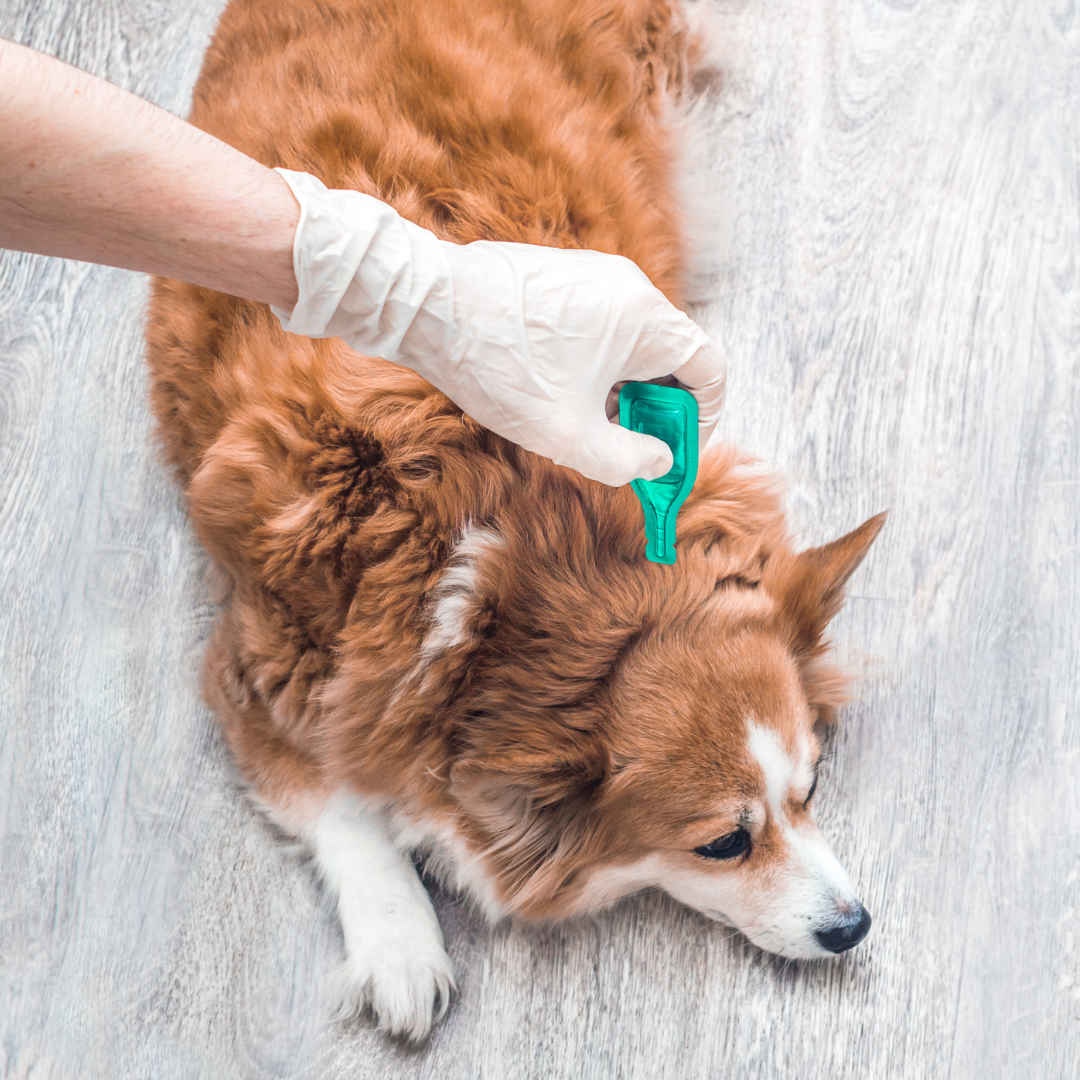
4. Flea And Tick Control
Regular bathing can help remove fleas and ticks from your dog's coat, reducing the risk of infestation.
When you bathe your dog, the warm water and shampoo can help to loosen and remove fleas and ticks from the coat.
Additionally, some shampoos contain ingredients that can help to repel or kill fleas and ticks, such as pyrethrin, permethrin, or fipronil.
It's important to use a flea and tick shampoo specifically designed for dogs, as they are formulated to be safe and effective.
These shampoos contain ingredients that help kill adult fleas, ticks, and their eggs and larvae.
It's also important to note that while bathing can help to remove fleas and ticks, it may not eliminate an infestation.
Regular flea and tick preventatives, such as topical treatments or oral medications, are recommended to help prevent infestations.
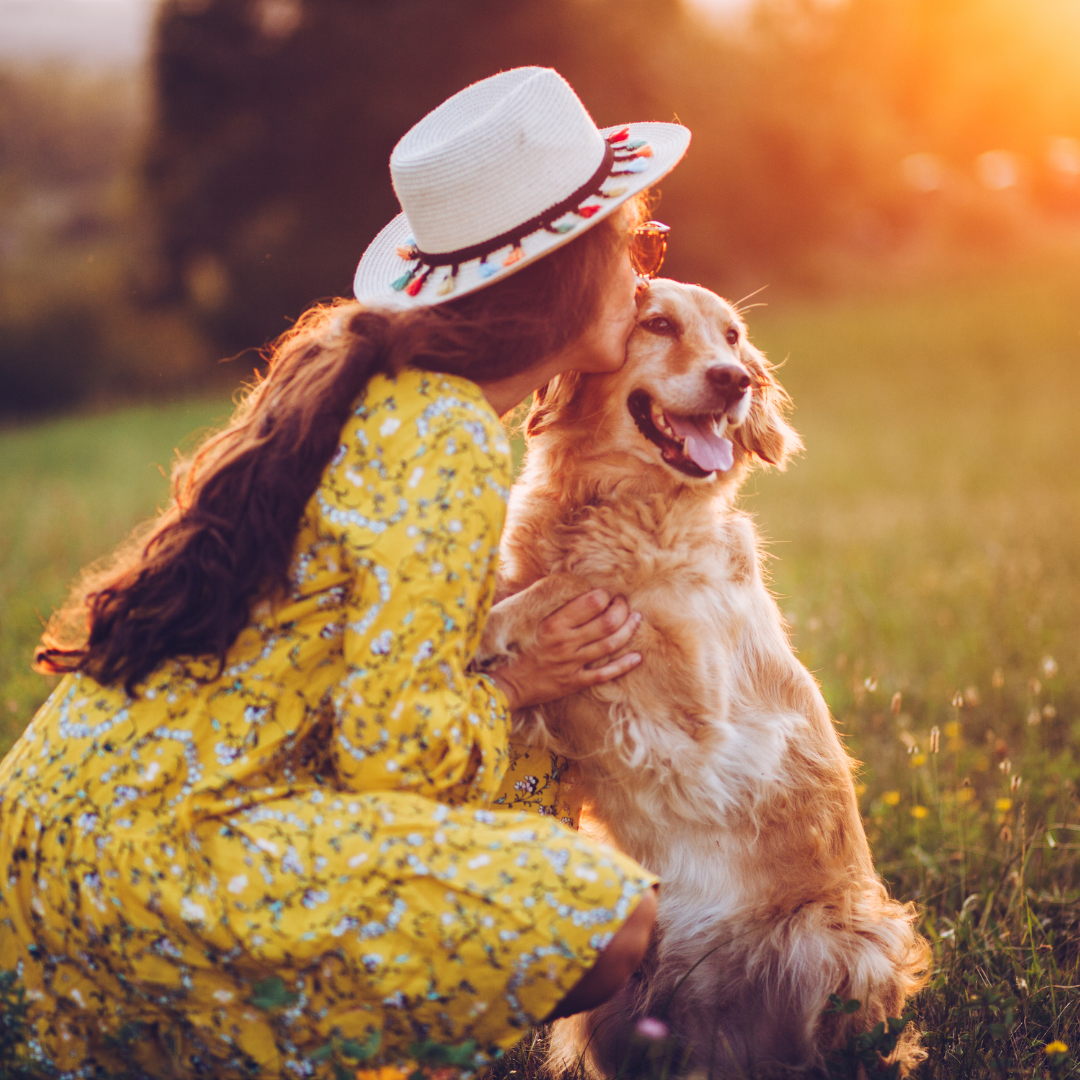
5. Bonding
Bathing your dog can be a great way to bond with them, allowing you to spend quality time with your furry friend.
During a bath, you'll have the chance to interact with your dog and give them attention, which can help to strengthen your bond.
Additionally, the physical contact of bathing your dog can be soothing for both you and your dog, as it releases endorphins, which are chemicals that promote feelings of happiness and well-being.
It's also a great opportunity to check your dog's coat, skin, ears, paws and nails for any abnormalities that may have gone unnoticed. This can help you to identify any potential health issues early on, which can be addressed with a veterinarian.

How To Bathe Your Dog
Bathing your dog can be a fun and bonding experience for you and your furry friend. Here are some tips on how to bathe your dog:
- Brushing your dog's coat before bathing is important because it helps to remove any tangles or mats, which can make it difficult to work the shampoo into their coat and remove dirt and debris. This step makes the bathing process easier and more effective.
- Gather all necessary supplies before you begin bathing your dog. This includes a dog-specific shampoo, a cup or pitcher for pouring water, a towel, and a brush. Having all the supplies ready beforehand can make the process smoother and less stressful for your dog.
- Fill the tub or sink with warm water, not hot. It's important to test the water temperature with your elbow or hand to make sure it's not too hot for your dog. Hot water can cause burns or discomfort for your dog.
- Wet your dog's coat thoroughly, starting at the head and working your way down. Be sure to avoid getting water in their eyes, ears, or nose, as this can cause discomfort or irritation.
- Apply the shampoo to your dog's coat, starting at the head and working your way down. Be sure to work the shampoo into a lather and be gentle when scrubbing. This will help to remove dirt and debris and leave your dog's coat clean and shiny.
- Rinse your dog's coat thoroughly and remove all the shampoo. Take extra care to rinse around the ears, eyes, and nose to avoid discomfort or irritation. Rinse until the water runs clear, ensuring all shampoo is removed.
- Dry your dog with a towel or use a blow dryer in a low heat setting. Make sure to dry your dog thoroughly to prevent them from getting cold. This is important to avoid discomfort and prevent your dog from getting sick.
- Brush your dog's coat again after it's dry. This will help remove any remaining tangles or mats and leave your dog's coat shiny and healthy.
It's important to remember that some dogs may not enjoy being bathed, so making the experience as positive and stress-free as possible is important. Be patient and gentle with your dog, and try to make it a fun and bonding experience for both of you.
It's also important to use a dog-specific shampoo that is pH-balanced for dogs and avoid human shampoos, as they can cause skin irritation, dryness, and other issues. And also, take note of the frequency of bathing your dog, as it depends on the dog's breed, lifestyle and the season.
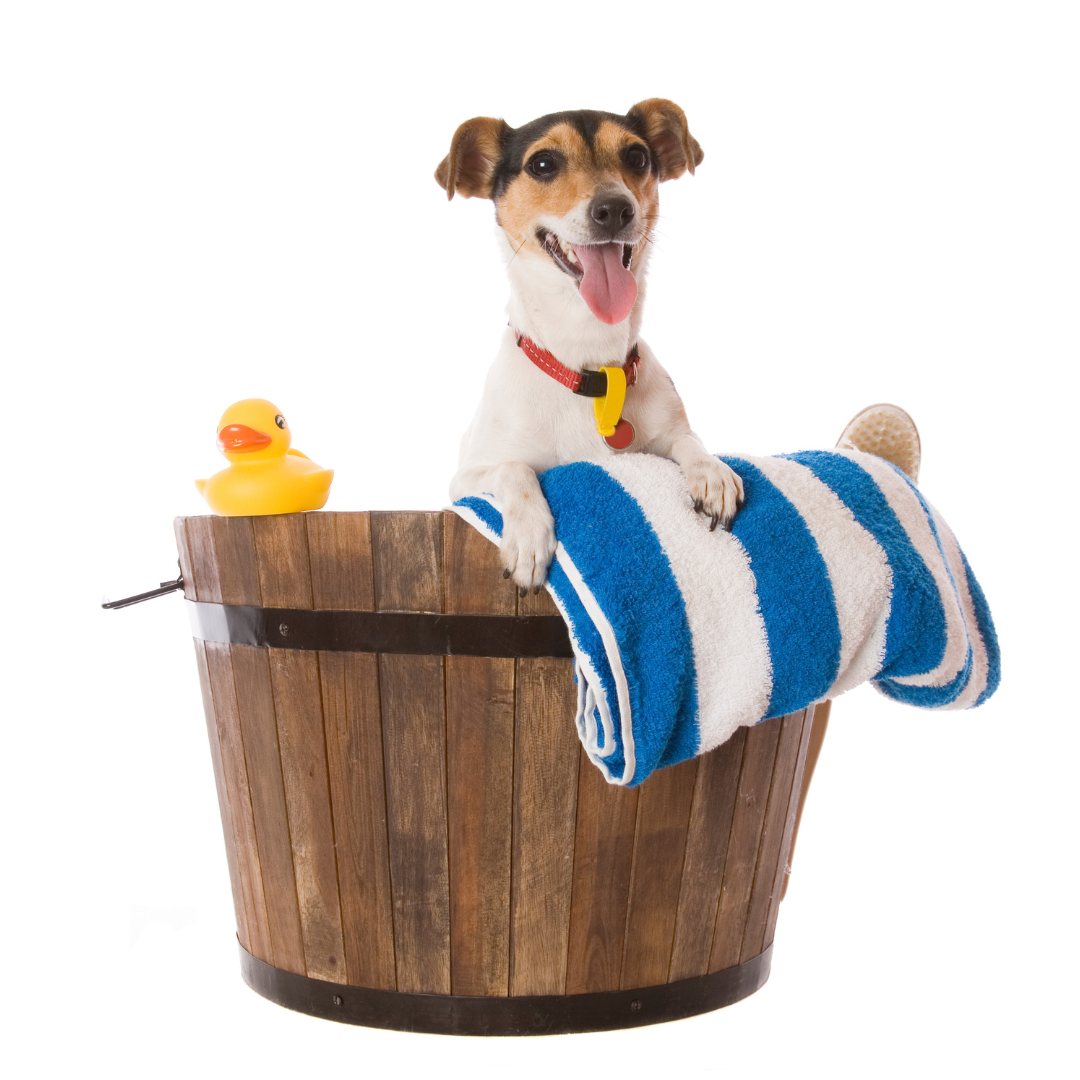
Where To Bathe Your Dog
First, you'll need to figure out where you'll bathe your dog. “Consider the size and breed of your dog as a starting point to ensure you have space and to best select whether to bathe your dog indoors or outside,” Freeman advises.
A sink may be the best option for tiny dogs. It's more than likely a bathtub, which can fit various breed sizes.
In particular, in seasons, bathing your dog outside rather than indoors may be a good option for some breeds.

Outdoors
Bathing some dogs on the ground in the backyard can be the most convenient option. This allows owners to avoid lifting their dogs, especially those that are medium to large. This is also a viable alternative for dogs who attempt to leap from the tub.
Some homeowners choose to use a low-pressure garden hose. Always check the temperature of the hose water before using it since it can be fairly hot at first in the summer, and you'll need to wait until it cools down before using it. If the temperature is cooler, buckets filled with comfortable, warm water may be required instead, as the hose water may be too chilly.
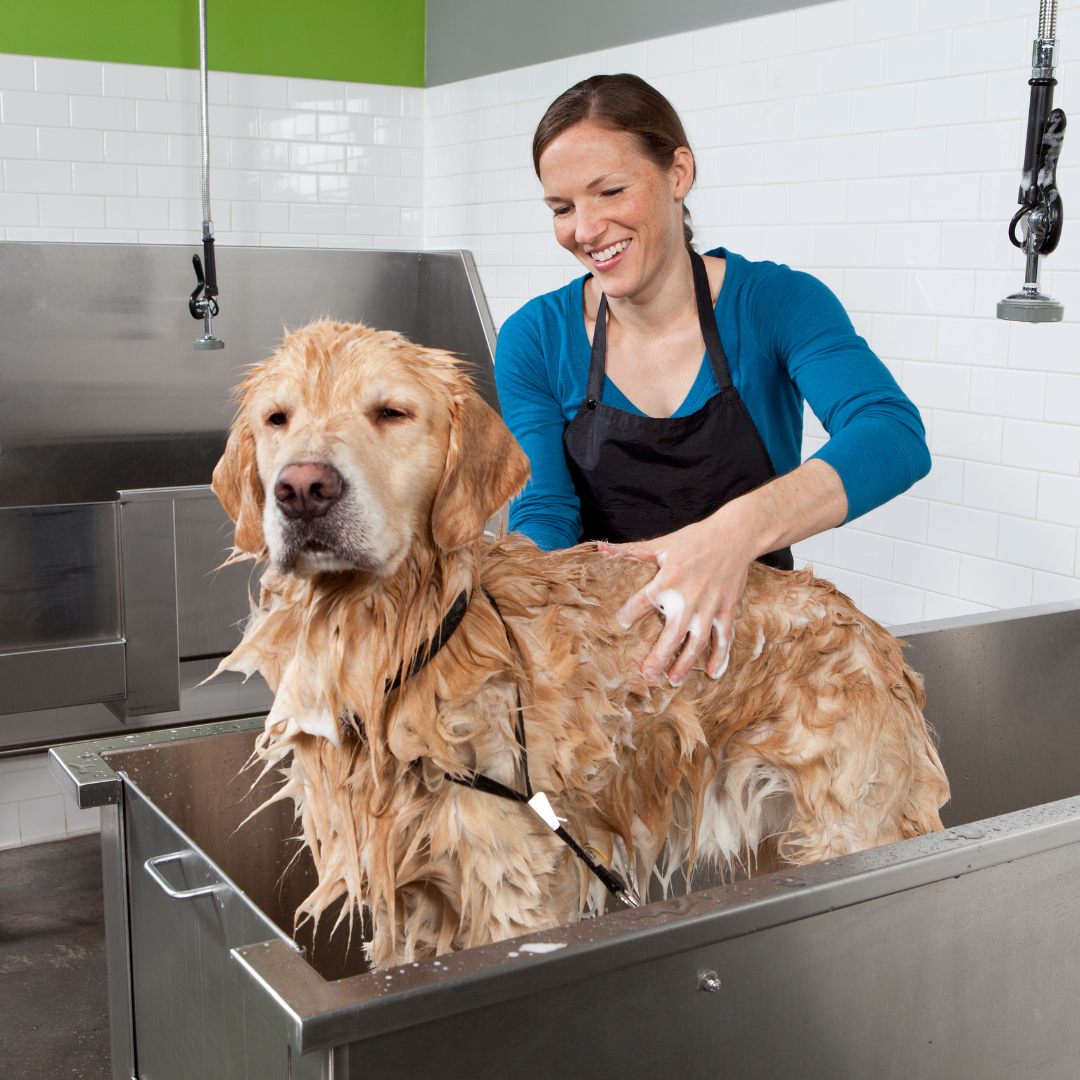
Tub For Dogs Or A Bathtub
A bathtub or a dog tub may be suitable for other pets. Observe your pet; if they appear upset, try bathing them outside instead.
If you're using a tub, keep an eye on your dog and be present. Allow the water to go down the drain, so the tub does not overflow. This is crucial for the dog's protection, as they can drown.
If you don't have a hose/shower attachment, you'll have to use containers/buckets of water and a ladle if you don't have one. Check the water temperature to ensure it's warm and pleasant for your dog and not too hot or cold.
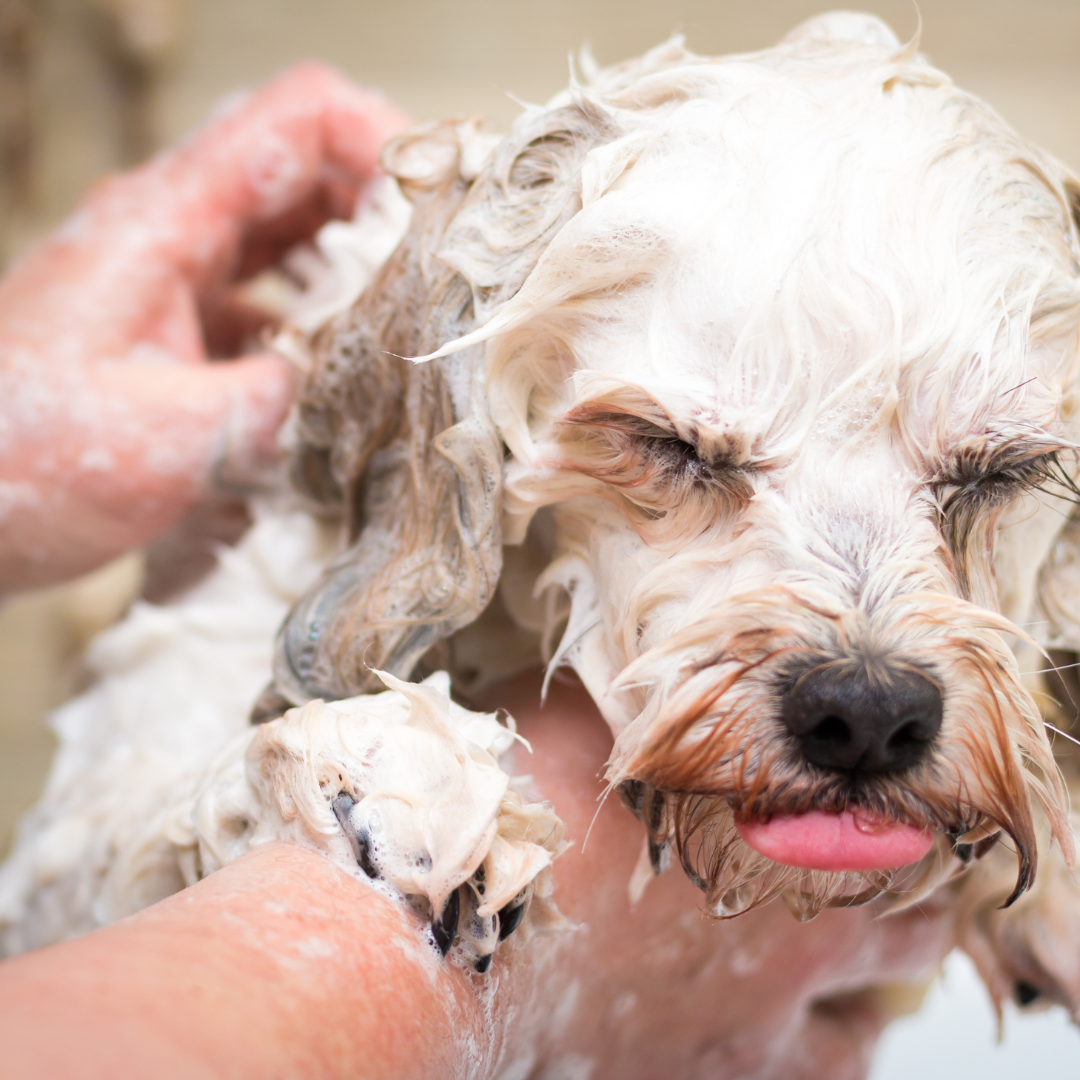
Essential Tips To Bathe A Dog
1. Ideal Water Temperature And Pressure For Bathing A Dog
Be cautious of water temperature and pressure, especially if bathing your dog outside, where hoses may run cold or hot.
According to Freeman, ensure the water pressure is low, and the water is lukewarm, whether you're using a hose or a shower head.
Warm water is both comforting for your dog and effective at cleaning; cooler water does not clean as well. (If you don't enjoy a cold bath, your pet will also dislike it.)
2. Number Of Bathing Times For Your Dog
You usually don't need to bathe your dog more than once a month unless he's just spent the afternoon playing in mud puddles.
This varies by breed; longer-coated dogs may require more frequent bathing or visits to a professional groomer. If unsure how often you should soap up your dog, see a groomer or veterinarian. However, giving a bath once a month is essential.
“The way a dog's skin works is that they have a whole new layer of cells around every 30 days,” Easton explains. “As a result, the aged cells begin to slough off. That's what causes dander and other such things. So grooming or bathing on a regular basis keeps the dandruff at bay.”
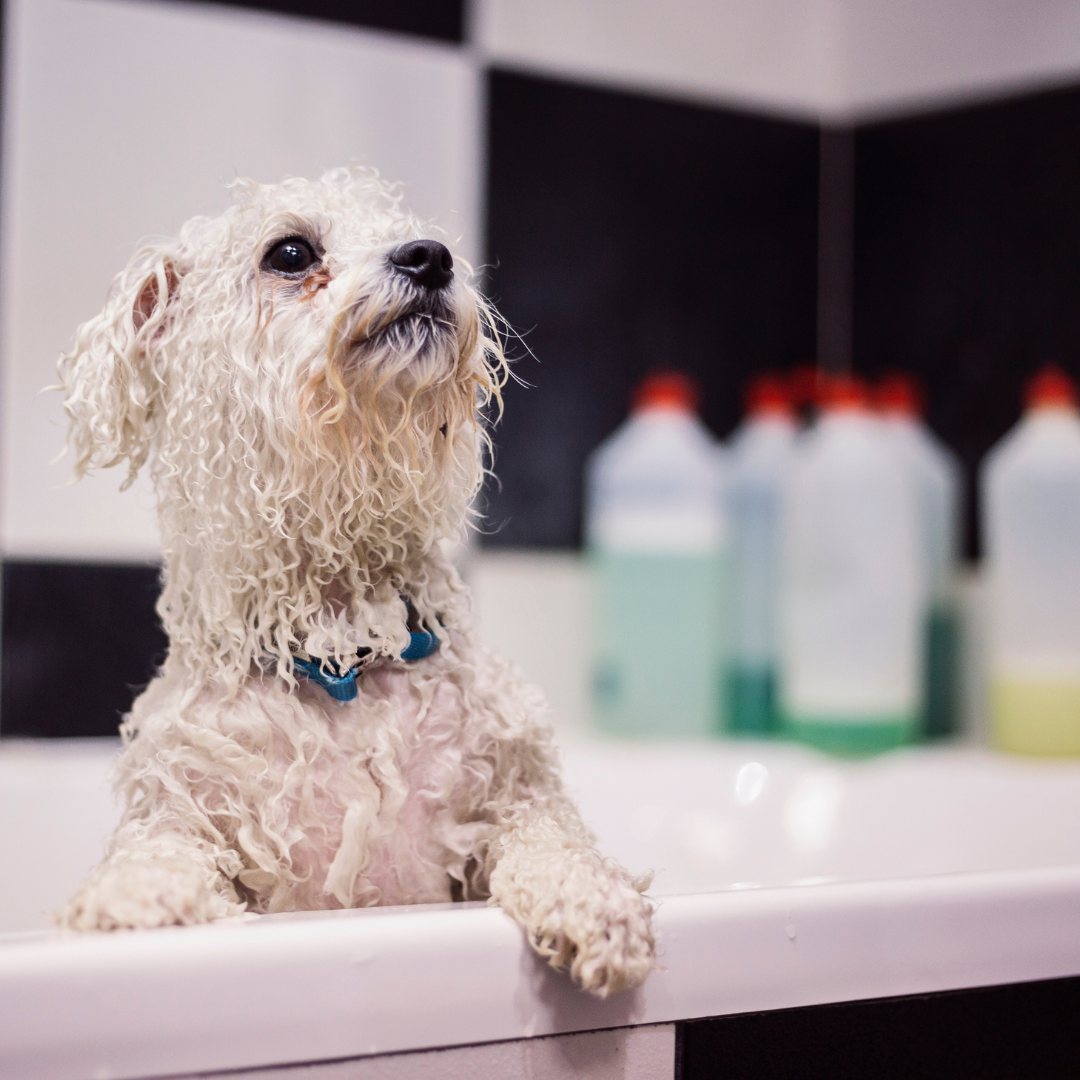
3. Products And Tools
Your initial selection will likely be where you wish to bathe your dog. The size of your dog will most likely influence your pick. A tiny dog may be able to be bathed in a kitchen sink, but a large dog will need more space.
Some pet parents prefer a dog-specific bathtub, which may be purchased separately or installed in the home or at a DIY dog bath facility.
Fur and filth might clog your family bathtub if you use a distinct dog bath area. It's fine if you prefer to bathe your dog in the family bathtub. Choose where your dog may enter and safely exit the cleaning area.
Then, before turning on the water, double-check that you have all your supplies and tools on hand. Easton adds, “You want everything you need exactly where you can reach it.”
You don't want to run around your house chasing a wet dog while looking for conditioner. Shampoo, conditioner, and towels will undoubtedly be on your shopping list. You might also want an eye wash and a non-slip bath mat.
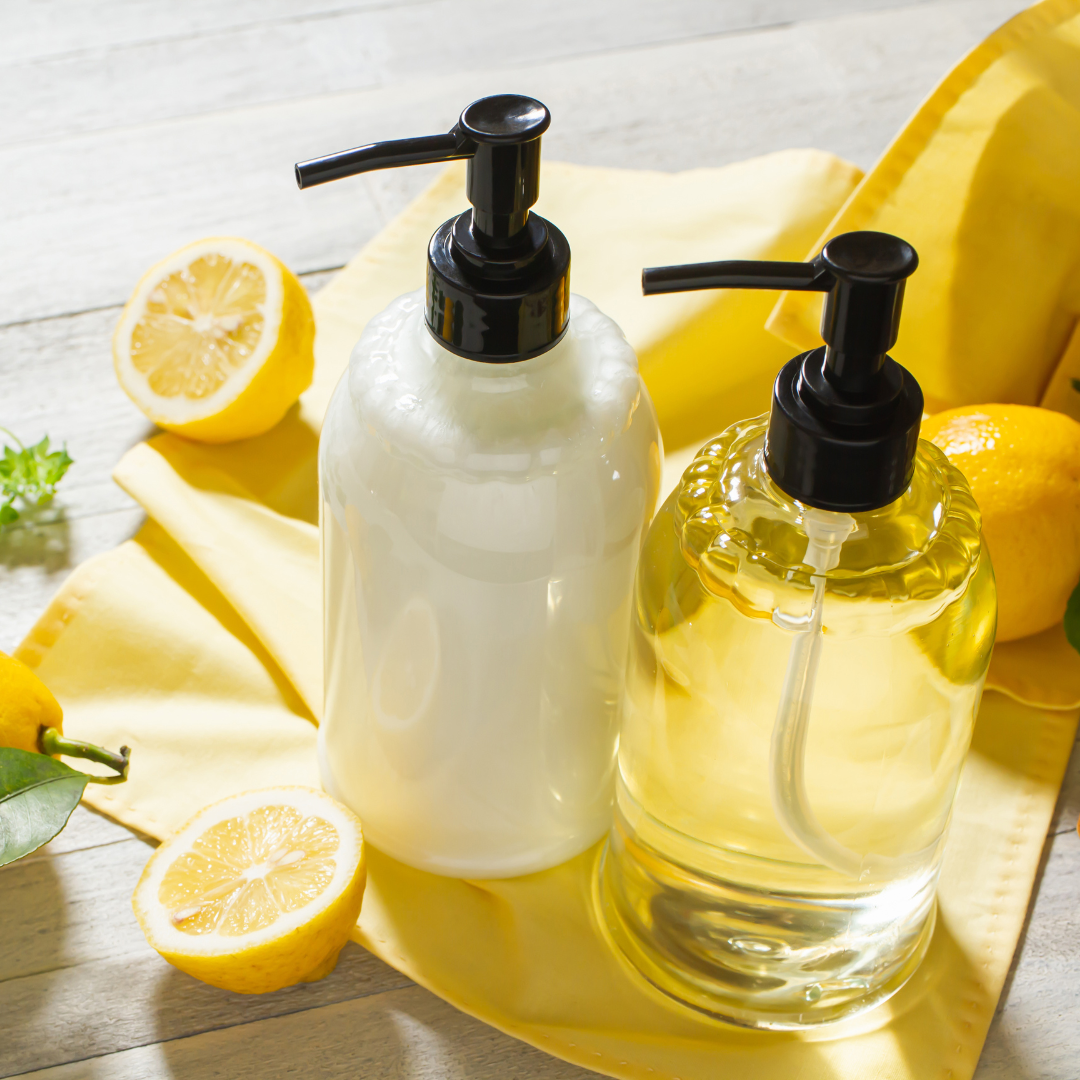
4. Choose The Best Shampoo And Conditioner
Your local veterinary clinic can advise you on which products are best for your companion dog. Select a shampoo made exclusively for dogs. Dogs have delicate skin, and the pH of their skin differs from that of humans, so human shampoo should not be used on them.
Choose a light, gentle, hypoallergenic shampoo for dogs with healthy skin and coats. If your dog has skin problems, your veterinarian can recommend a shampoo or product to assist in managing or treating those issues.
To reduce dryness after washing, apply light and gentle, hypoallergenic rinse-out conditioner after shampooing.
Patch a tiny amount of products first to ensure there is no reaction.
You'll want to start with the correct products to give your dog a good bath. “Make sure you're using a shampoo designed exclusively for dogs,” Easton advises.
“The pH of a dog's skin differs from that of a human's. As a result, they're more alkaline. It's possible that using a shampoo designed for people can irritate their skin.”
Puppy-specific shampoo can be beneficial when bathing a puppy, according to Easton. Puppy shampoo has a pH similar to a dog's eyes, so it won't bother the eyes as much if some get into them.
If you're unsure what products to get for your dog, talk to a groomer about what he or she uses. Easton recommends using a gentle shampoo. If your dog has a specific problem (such as itchy skin), a shampoo developed to address that issue might be the best option.
The next vital step after bathing your dog is to apply a conditioner. “When grooming at home, you should always apply a conditioner after your shampoo since it strips many of the natural oils out of your dog's skin and fur.”
As a result, your conditioner rehydrates the epidermis while also closing all the cells on the outside of the hair shaft,” Easton explains.
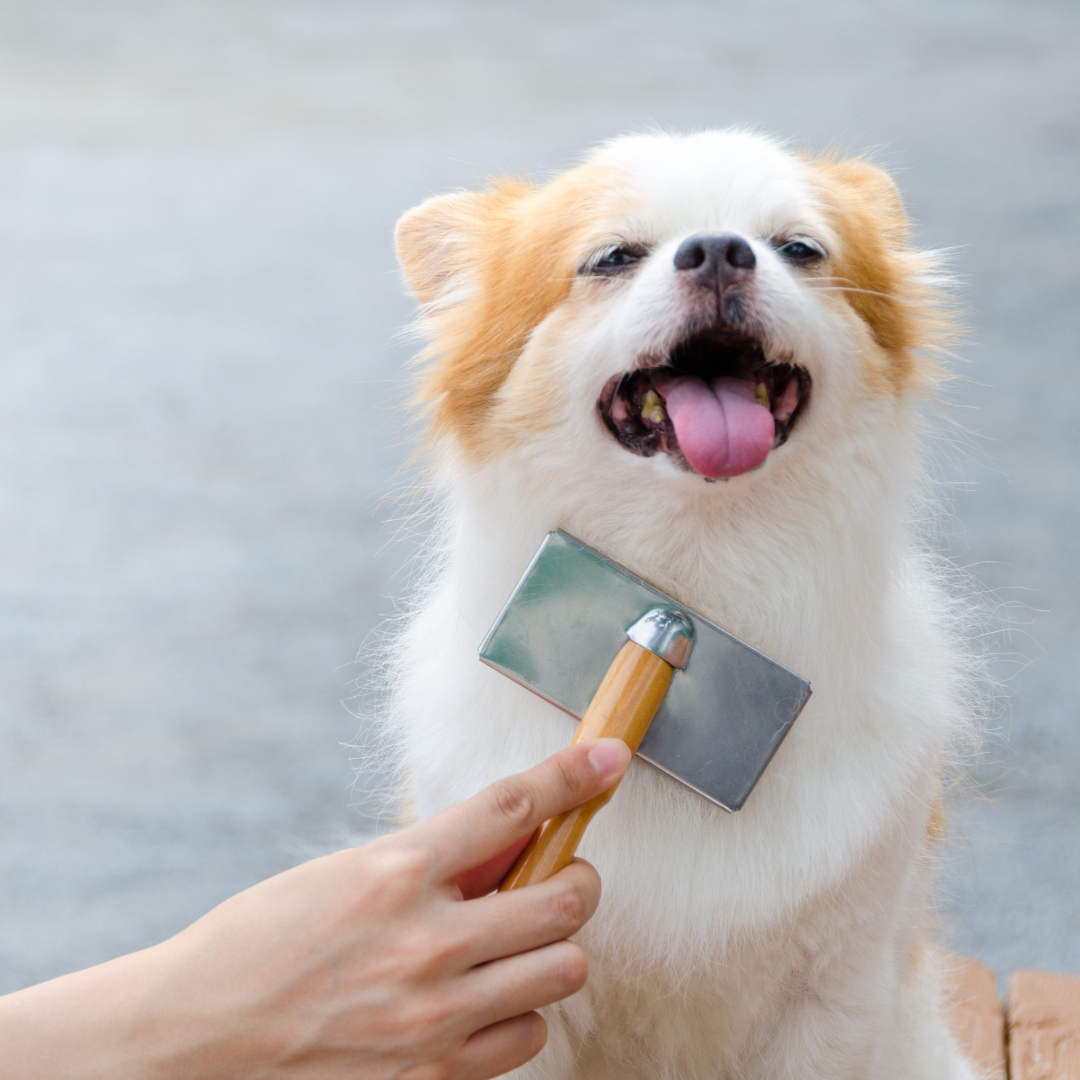
Steps To Grooming
The following are the basic stages for grooming a dog:
1. Brushing
Brushing is the first line of defence for any dog owner to keep their dog clean. For short-coated dogs, this task should be done once a week, and for long-coated breeds, at least every other day.
Brushing loose fur, preventing matting, removing existing mats, and removing dirt and debris are all benefits of brushing. Before bathing your dog, give him a thorough brushing.

2. Cleaning Their Ears
Dirty ears can cause ear infections and smells. Some owners prefer to clean their dog's ears before bathing him, but you may always do it afterward if you want. To clean their ears, do the following:
- Soak a cotton ball in a professional ear-cleaning solution for dogs.
- Wipe out the interior of the ear leathers first.
- If your breed has a lot of hair in the canals, gently pluck out little sections of hair. This promotes air circulation, making bacteria and mites less attracted to the canals.
- After removing any excess hair, dip a cotton swab in the cleaning solution and try to remove any debris.

3. Brushing The Teeth
Brushing your dog's teeth is an essential part of every grooming routine. You can use either doggie toothpaste or just plain water.
Begin with the back teeth and softly push the brush against them in a circular motion, paying great attention to the gum line. Keep in mind to clean both the front and back surfaces.
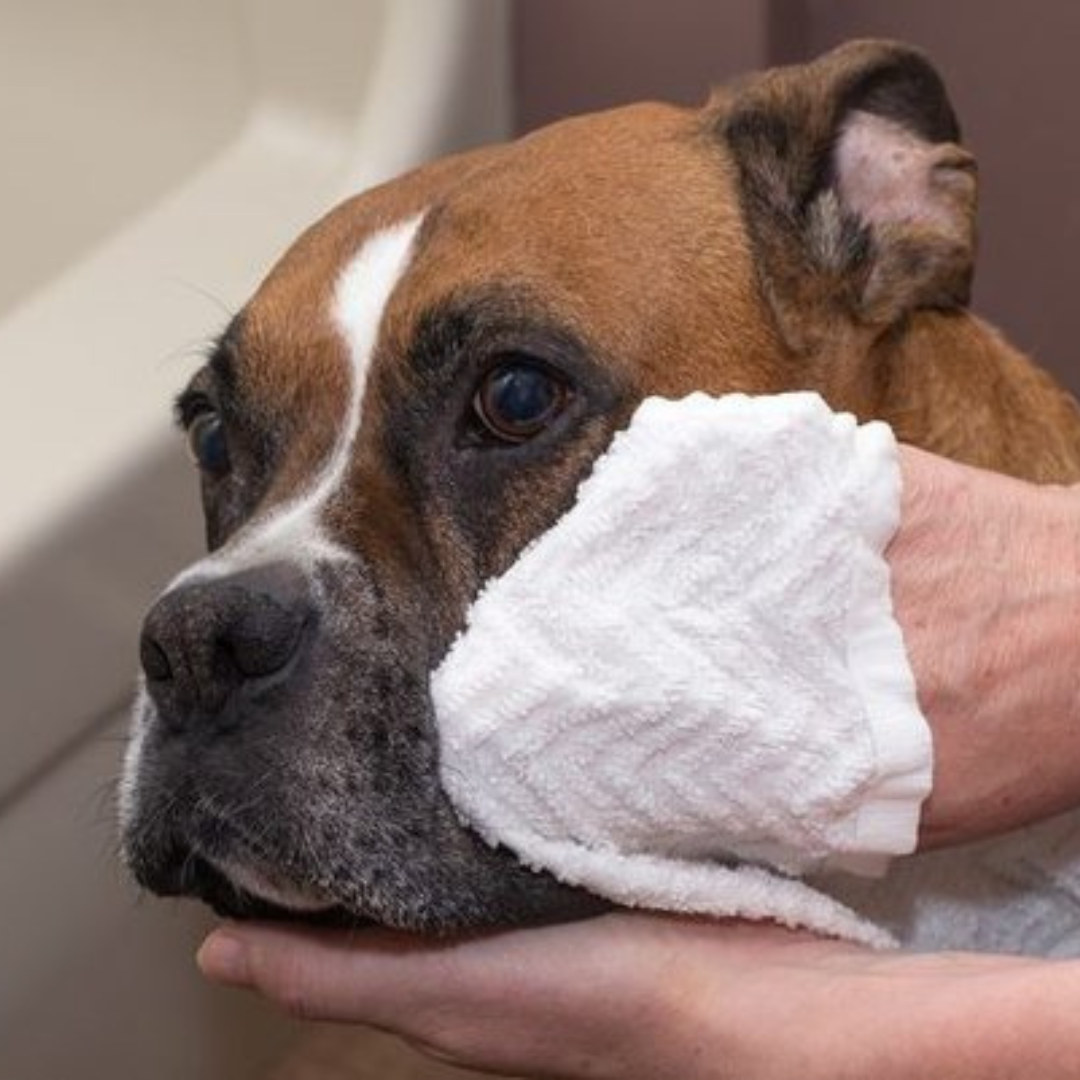
4. Washing Your Dog's Face
One of the most difficult aspects of dog grooming is washing your dog's head. You don't want soap or water to enter your dog's sensitive ears, nose, or eyes.
Easton advocates saving this step until the end of the bath and cleaning your pet's face with a washcloth.
Dip the cloth in soapy water, gently wash your dog's head and face, and then rinse with a new washcloth dipped in clear water. “You just want to make sure that all of the soap is out of those locations.”
Even if you use a puppy shampoo that is supposed to be gentler on the eyes, it can still irritate, so avoid the eye area as much as possible.
If shampoo gets into your dog's eyes, you should have eye wash on hand. If your dog gets eye goobers, Easton recommends soaking them and gently removing them with a toothbrush.
How To Bathe A Water-Averse Dog
Although some dog breeds enjoy the water (we're looking at you, Golden Retrievers or Portuguese Water Dogs), the sound of the bath faucet turning on makes many canines shiver.
To counteract this, try showering your dog with loads of positive reinforcement. It's fantastic to be praised; it's even better to be rewarded! Make positive associations for your dog to remember the next time he sees you collecting dog shampoo.
It's also beneficial to have a spouse hold the dog as you bathe him, according to Easton. Start bathing your dog when he's a puppy, if feasible, to assist him in getting used to bath time.
- Start by introducing your dog to the tub or sink slowly and gradually. Let them sniff around and investigate the area before you begin bathing them. This can help them to become familiar with the space and reduce their anxiety about the process.
- Use positive reinforcement, such as treats or praise, to make the experience positive for your dog. This can help to create a positive association with being bathed and encourage your dog to cooperate.
- Use a cup or pitcher to pour water over your dog's coat instead of immersing them in a tub or sink. This can help reduce the amount of water splashed on your dog and make them more comfortable. It's also a good idea to use a cup or pitcher to pour the water on the dog's head and face instead of a hose or shower head.
- Use a dog-specific shampoo that is pH-balanced for dogs, and avoid human shampoos, as they can cause skin irritation, dryness, and other issues. A pH-balanced shampoo can help keep your dog's skin and coat healthy and be more gentle on their skin.
- Warm, but not hot, water should be maintained. Test the water temperature with your elbow or hand to ensure it's not too hot for your dog. Hot water can cause burns or discomfort for your dog.
- Use a low-pressure sprayer or a cup to rinse your dog's coat rather than submerge them in water. This can help to reduce the amount of water that is splashed on your dog, which can make them more comfortable.
- Dry your dog with a towel or use a blow dryer in a low heat setting. Make sure to dry your hands first.
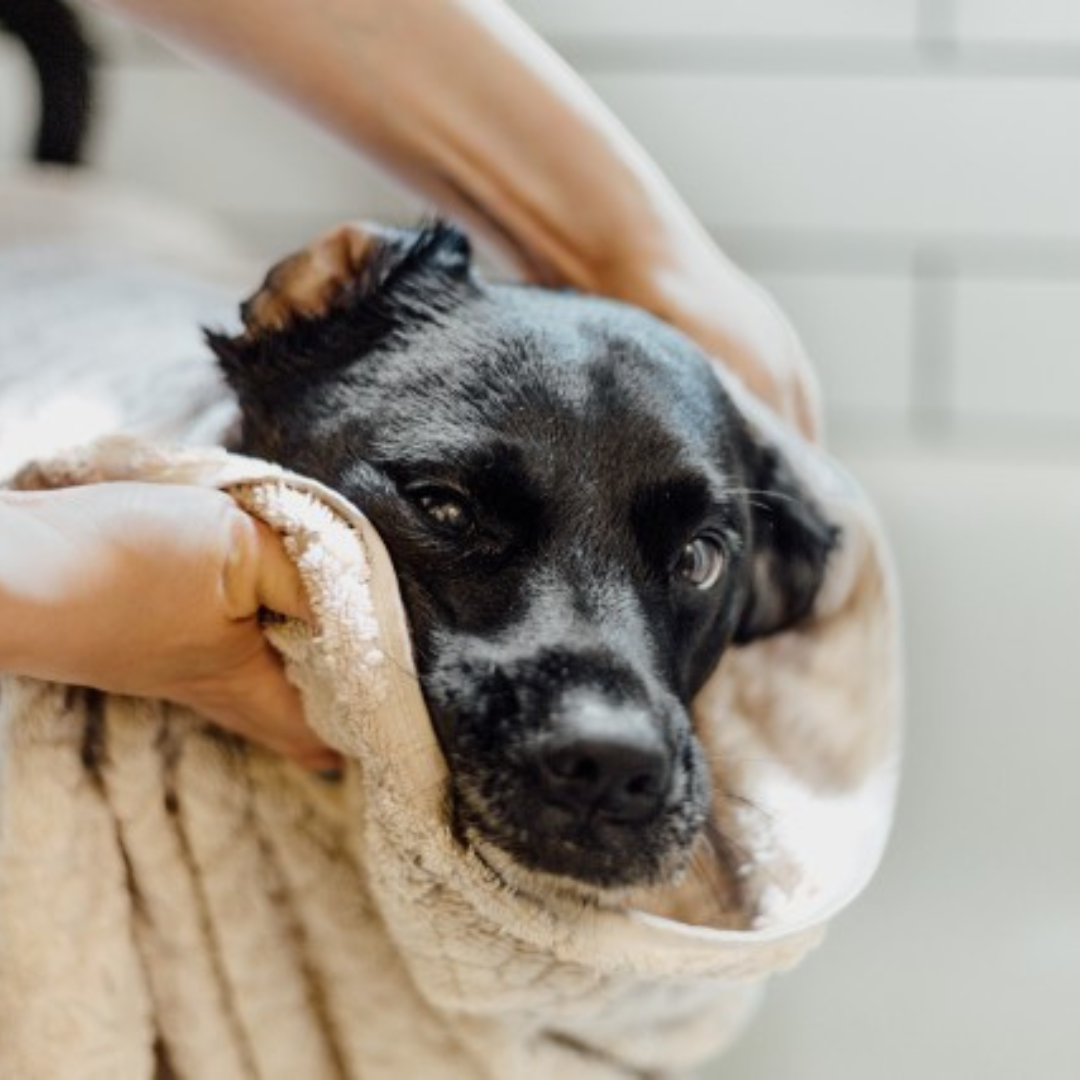
What To Do After A Bath
To begin, towel-dry your dog as much as possible. Then, use a dog-specific or human hairdryer in a medium or cool setting.
Brush your dog as he dries, according to Easton. You can also air-dry your dog if he doesn't get chills or shiver excessively.
If you're air-drying your dog, “rub a brush through them every 10 or 15 minutes while they're drying to help avoid mats or separate mats if they have them,” Easton advises.
Your reward for washing your dog is a dog who looks and smells clean. And the satisfaction of knowing you've done something good for your dog's health and appearance.
Bathing A Dog – Safety Tips
Whether your dog enjoys baths or is constantly apprehensive about the possibility, you'll want to put certain precautions in place to ensure bath time is safe and secure.
“Unless your dog can stay still throughout a bath or you can confine them with your hand,” Freeman advises, “it's crucial to make sure you have somewhere to tether them if they escape mid-bath.” “Always keep an eye on your dog.”
She also advises pet owners to wash away any residual shampoo properly. “Failure to do so can result in contact dermatitis or hot areas, as well as moist and infected lesions that itch,” says the author.
Conclusion
You now know how to groom a dog like a professional groomer properly. No one can tell you that you groomed your dog with a little practice!
I trust you enjoyed this article on How To Clean A Dog. Please stay tuned for more blog posts to come shortly. Take care!
JeannetteZ
>>>Please click here to read my article on A Full Overview Of Dogs And Their Activity<<<
My #1 Dog Training Recommendation
Your Opinion Is Important To Me
Thoughts? Ideas? Questions? I would love to hear from you. Please leave me your questions, experience, and remarks about this article on How To Clean A Dog in the comments section below. You can also reach me by email at Jeannette@Close-To-Nature.org.
Disclosure
This post may contain affiliate links. I earn from qualifying purchases as an Amazon Associate and other affiliate programs. Read my full affiliate disclosure.
You might also enjoy these blog posts:
Essential Gardening Tools And DIY Storage Ideas
How To Train A Puppy To Use A Pee Pad
Best Games To Play With Your Dog At Home

